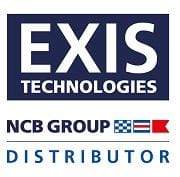SPICA e-Navigator is an ECDIS (Electronic Chart Display and Information System) passage planning software that helps navigators plan a safe and efficient passage for a vessel using electronic navigational charts (ENCs). The software can take into account a variety of factors, such as water depth, traffic separation schemes, and weather conditions, to help navigators plan a route that minimizes risks and maximizes efficiency.
Here are some key features of our ECDIS passage planning software:
Chart download & display: The software can download and display electronic navigational charts (ENCs). The charts can be customized to show different layers of information, such as water depths, navigational aids, and potential hazards.
Route planning: The software can help navigators plan a safe and efficient route between two points, taking into account factors such as weather conditions, sea currents, and vessel specifications. The software can also help identify potential hazards along the route, such as shallow waters, reefs, and other obstructions.
Collision avoidance: The software can provide navigators with tools to avoid collisions with other vessels, such as displaying AIS (Automatic Identification System) information and calculating potential courses of action.
Voyage optimization: The software can optimize vessel performance, such as speed, fuel consumption, and engine efficiency. This information can be used to optimize passage planning and reduce operating costs.
Voyage recording: The software can record data from the voyage, including navigational data, weather conditions, and other relevant information. This data can be used for performance analysis, passage planning optimization, and compliance with regulations.
Regulatory compliance: The software can help navigators comply with SOLAS Chapter V navigation regulations for nautical chart carriage requirements on board a vessel.
Overall, our ECDIS voyage planning software can help navigators plan and execute safe and efficient passages, while reducing risks and operating costs.
- Home
-
Products
-
E-Navigation
-
Services
-
Resources & Information
- IMO Publication Carriage Requirements On Board Vessels
- U.S. Carriage Requirements for Nautical Charts & Publications on Board Ships
- List of Flag States Requiring Carriage Of Publications
- Rescue Net Information & Solutions
- Jane's Fighting Ships
- The Mariner's Blog
- Maritime Resource Directory
- Instructional Videos
- Downloads
- About
- Contact








